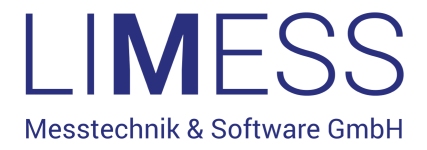Comparison of the LIMESS measurement systems and their measurements.
The following table compares our measurement systems in terms of the measured variables.
Measured variables that can be derived from this include speed, acceleration, distance and many more,
Q400, LIMtrack and LIMtrack6D can calculate via integrated analysis module (scripting) many other complex measures (Young's-modulus, temperature coefficient of expansion, velocities, etc.).
|
Product |
Base measurement |
Point |
Integral* |
Spatially resolved |
Typical Applications |
| RTSS - Videoextensometer |
Position, distance, distance change, strain | ✔ | ✔ | Standardised material testing (e.g. tensile test) | |
| Q400 - Digital Image Correlation |
2D/3D coordinate, displacement, strain and all deriver measures |
✔ | ✔ | ✔ | Material testing, Component testing Fatigue tests, crack propagation 3D Vibration test and modal analysis Dynamic tests |
| LIMtrack6D 3D motion analysis |
3D coordinate, 3D displacement and all derived measures |
✔ | ✔ | 3D motion analysis for static and dynamic tests | |
|
2D displacement & motion |
✔ | ✔ | 2D Motion and vibration analysis | ||
| StrobeCAM Vibration analysis |
Video recording | Vibration tests with Shaker (Image analysis with LIMtrack) |
|||
| Surphaser - 3D Scanner |
3D coordinate / 3D geometry | ✔ | Quality control Reverse Engineering |
*Integral:
The RTSS video extensometer measures the strain from the distance change of two markers. The measured strain value is therefore the average (integral) component elongation (strain) between the markers and similar to a mechanical extensometers
With the Q400-DIC system, the integral (locally averaged ) measurement values (extensometer, polygon surfaces, circular surfaces, etc.) are optionally calculated after the spatially resolved analysis.

